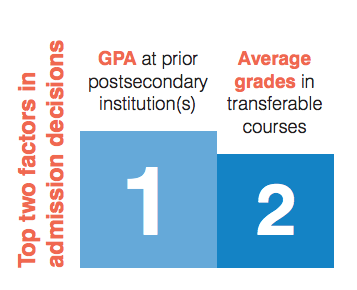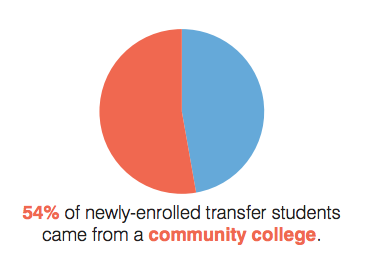With the rising cost of college tuition, many students opt to begin their higher education at a community college and then transfer colleges to a four-year school to save money. Others may recognize that their current school is not the right fit so choose to continue their education at a different one. Whatever the reason for transferring, the process can be bumpy. Many private liberal arts colleges have small class enrollments and are therefore very selective and competitive.
As a college transfer student, you will need to ensure that every facet of your application is enticing to the college you want to attend. To give you a competitive edge, here are five simple hacks on how to transfer colleges to enhance your chances of acceptance to the college of your choice.
1. Do Your Homework
Despite the prevalence of students changing schools during the course of their higher education, figuring out how to transfer colleges is not as straightforward as you might think. You will want to consider the type of school that you are applying to and how selective they are in their admissions process for transfer students. In fact, only one transfer applicant is accepted for every six first-time students enrolled at a public college. If you are attempting to enroll as a college transfer student at an Ivy League university, you’ll be met with many more obstacles than a state college or university. Other private schools are also far more restrictive with their enrollment, admitting about only one transfer student for every 20 initial applicants.

Additionally, you will want to carefully consider the degree programs available at your intended college and their requirements. If you started taking classes toward a nursing degree at your current school but want to transfer to a college to enroll in their business program, you might struggle to get credit for your previous courses toward your preferred degree. Consider the type of coursework that counts toward the discipline you are interested in pursuing and confirm that any credits you have taken will transfer to the college. Otherwise, you will not only lose money from the initial credits taken but also might spend more money and time finishing your degree than initially intended.
2. Demonstrate Success at Your Current College
As a transfer student, you have one distinct advantage over first-time college entrants: you have done it before. Within your essay, letters of recommendation, and transcripts, you will want to put forth your best documentation of your successes at your current college. A strong GPA is the most important factor that colleges consider and will instill confidence in the admissions team that you will be able to handle the rigor of academic expectations at the college level. Observations from your professors that illustrate your dedication to learning can also boost your profile to the college of your choice. If your current higher education performance is not as stellar as you’d like it to be, a supplemental essay or admissions interview is a great opportunity to explain your experiences and any gaps in your performance.
3. Complete Your Associate’s Degree Prior to Transferring Colleges

In addition to demonstrating academic success, obtaining an associate’s degree prior to transferring can increase your success in getting accepted and completing your four-year degree. If you are planning to transfer from a community college to a liberal arts college or public university, acquiring the two-year degree in your chosen field can bode well for your prospects when applying. Similar to your GPA, your dedication and ability to complete all of the requirements for an associate’s degree conveys your aptitude in both the general academic setting and within your desired field of study. A school like Cornell College will be more willing to take a gamble on you and invest in you as an applicant when they feel confident that you have the skills and determination to complete your four-year degree.
4. Follow a Pathway Program or Articulation Agreement
One of the most straightforward ways to begin your education at one institution and continue at another is through a pathway program or articulation agreement. Liberal arts colleges that offer these programs typically partner with a community college for students to move seamlessly from one degree to the next. Cornell College, for example, offers a list of AA degree articulations in certain degree areas. More importantly, pathway programs and articulation agreements typically involve automatic acceptance into the transfer college when the requirements in the plan are fulfilled. If you are able to plan well ahead of your college transfer, enrolling in an associate’s program that transitions to an undergraduate school is the most concrete way to ensure acceptance.
5. Be Aware of Acceptance to College vs. Degree Program
If you are transferring from another undergraduate college or university or have not enrolled in a community college that has a pathway program or articulation agreement, it’s important to keep in mind the difference between acceptance to a college and to a degree program.
If you aim to transfer into a school to get into their reputable engineering program, for example, it is possible to be granted enrollment to the college but not be accepted as a major in the discipline. Therefore, in addition to the previous advice to demonstrate a strong GPA, you will want to ensure that you have a solid foundation in the classes required for your intended major on your transcript. Letters of recommendation from your current professors in the discipline as well as open communication with the academic advisors and faculty at your preferred transfer school can help boost your profile and increase your chances of acceptance into the degree program.
Knowing how to transfer to a college can be a bit stressful, but if you follow the 5 simple hacks outlined above, the transfer process will be smoother. Think ahead, plan ahead and work smartly to set you on the right path toward completing a bachelor degree at the college of your choice.

Leave a Reply